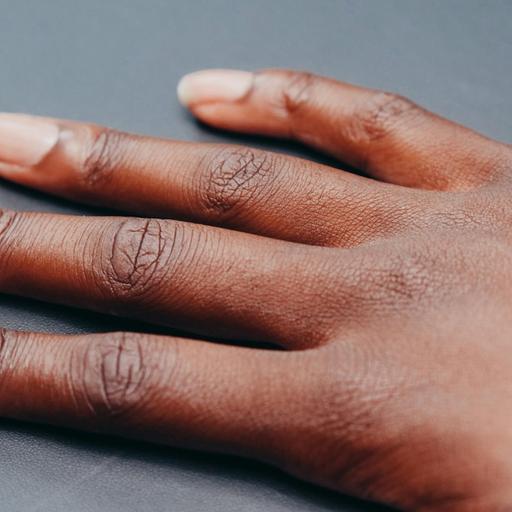Eczema 101

Our skin is the largest organ we have, and it is so essential that we provide the best care for it. Some may experience irritation or other symptoms like itchiness, rashes, or scaly patches. Skin irritation can often result from different skin conditions, but one I want to highlight today is Eczema.
Eczema is a common condition in children and adults, so I have created a little cheat sheet to help provide more information on what it is, how to care for eczema-prone skin and a list of things to avoid.
What is eczema?
Eczema is not a specific diagnosis as it refers to multiple conditions that may cause the skin to be inflamed (red, itchy, and scaly). There are many types of eczema, but atopic dermatitis, also referred to as atopic eczema or skin asthma, is one of the most common. Atopic dermatitis (AD) tends to be a chronic skin condition that flares up periodically, usually with patches of inflamed and pruritic (itchy) skin that are easily irritated.
Although it can occur at any age, it most commonly starts manifesting in children under 5. It may coexist with other allergic conditions (e.g., atopic triad), including hay fever (allergic rhinitis) and asthma. The exact cause of AD is unknown, but multiple factors that could contribute are family history and environmental triggers. AD patients have skin barrier dysfunction, where there are gaps in the outermost layer of skin that allows water to escape resulting in dryness. This may also allow for increased entry of germs and irritants, which triggers an exaggerated immune response and inflammation in the skin.
Can eczema be treated?
Although eczema cannot be cured, it can be controlled. The mainstay of treatment is proper skincare with daily moisturization to restore and maintain the skin barrier. A tremendous moisturizing lotion is Vaseline Intensive Care Advanced Repair is an excellent moisturizing lotion because it has a unique blend of humectants that help draw water into the skin. The formula includes micro-droplets of Vaseline Original Healing Jelly, which helps prevent water from evaporating by adding a protective layer of occlusion.
It is also important to avoid triggers when feasible. For more severe cases, patients may benefit from seeking medical advice and treatment from a licensed dermatologist or physician who can prescribe appropriate creams or medication based on their specific needs.
Are there any at-home remedies?
Coconut oil can help hydrate the skin, although I wouldn’t recommend it as a solo moisturizer. It is best to use virgin or cold-pressed formals free of irritants. This has antimicrobial properties, which help reduce the risk of bacterial infections. Another plant-based oil I would recommend that can be helpful to use for eczema is sunflower oil. It helps with the skin’s barrier function, increases hydration, and decreases inflammation. It is always best to apply these oils twice daily, one of those times being while the skill is still wet shortly after the shower.
What flags indicate a patient will have to see a dermatologist?
As I shared above and can’t stress enough, always consult with a healthcare provider who has experience diagnosing and managing eczema. If the eczema flares are moderate to severe or very frequent despite implementing a regular bathing and moisturizing routine and using over-the-counter creams. In that case, a patient should consider seeing a dermatologist for medical treatment. A dermatologist and sometimes an allergist can help identify possible triggers by doing a series of critical allergy tests for trigger avoidance. Any signs of skin infection also warrant prompt evaluation, which can include increased redness, oozing, tenderness, and crusting.
What is the best way to add moisture to the skin?
The most effective way to add moisture to the skin is to moisturize immediately after a shower (usually within 3 minutes) to trap all the water in and seal the skin barrier. A great option would be the one I suggested above, the Vaseline Intensive Care Advanced Repair, which was awarded the National Eczema Seal of Acceptance. This formula is unscented (this is important as fragrance is a common irritant), and it contains a unique blend of humectants and occlusives. Some people with more severe dryness or eczema can also benefit immensely from layering an ointment on top of the moisturizer lotion for extra protection of the skin barrier and hydration. An all-time favorite ointment is the Vaseline Original Healing Jelly. It is excellent because petrolatum is the most hypoallergenic ingredient; it is non-irritating and non-comedogenic.
Are there any do’s and don’t people should keep in mind?
We tend to think we need to try anything and everything to combat skin concerns we are facing but please DON’T. Instead, I recommend consulting a licensed dermatologist, but until that appointment, here are some DOs and DON’Ts to keep in mind.
- DO avoid common triggers.
- DO moisturize your skin daily, even when you have no symptoms. Use a scent-free cream or ointment, best applied just after bathing while skin is still damp.
- DO use hypoallergenic products when possible.
- DO use mild soaps and lukewarm (not hot water)
- DO wash clothing and linens in fragrance-free soap; double rinse when possible.
- DO keep your fingernails short.
- Do not bathe more than once a day or take prolonged hot showers or baths
- Do not pick or scratch your skin; instead, gently pad, rub or tap and apply creams as needed
- Do not just moisturize when you feel symptoms are worse, do it daily
Please note that this information is for educational purposes and awareness around Eczema. It should not be used as a formal diagnosis or treatment. If you are experiencing symptoms, I recommend using Vaseline x HUED’s derm finder tool to schedule an appointment with a dermatologist in your area.


